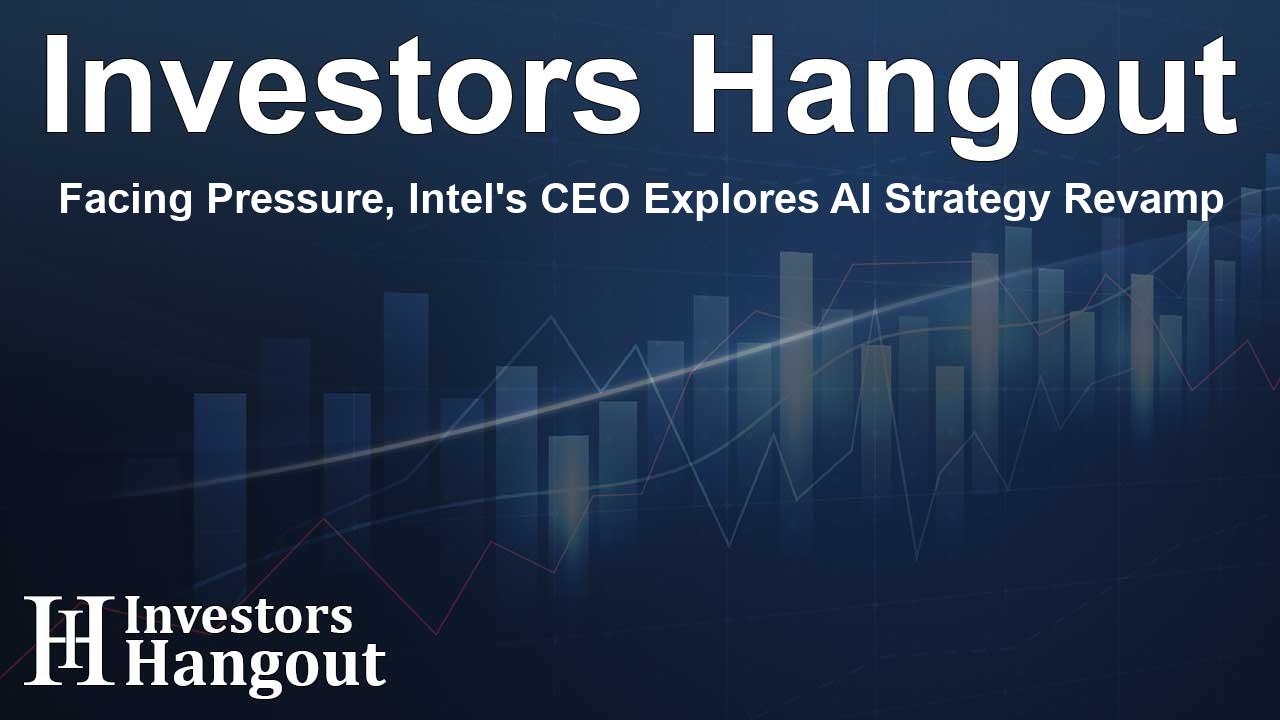Facing Pressure, Intel's CEO Explores AI Strategy Revamp

Intel's Strategic Shift in the AI Market
As Intel Corp. (NASDAQ: INTC) faces ongoing challenges in the artificial intelligence chip market, the company is taking a hard look at its business strategy. These pressures are significant, as Intel aims to reclaim its competitive edge against strong rivals.
What Challenges Is Intel Facing?
Intel is currently under the microscope as CEO Pat Gelsinger leads the company through a transformative period. The rising demand for efficient and powerful AI solutions has intensified competition. Gelsinger, with a vision to redefine Intel’s role in the semiconductor industry, is now prioritizing the enhancement of its AI strategy. Recent reports indicate the formation of an AI Acceleration office, spurred by the board's call for a renewed emphasis on these technologies.
The Competitive Landscape
Despite Intel's efforts to boost its capabilities, recent statistics highlight its struggles in the AI chip sales market. The company’s Gaudi 3 chips are expected to generate around $500 million this year, which is a stark contrast to the multibillion-dollar sales figures achieved by competitors like Nvidia Corp. (NASDAQ: NVDA) and Advanced Micro Devices Inc. (NASDAQ: AMD).
Recent Setbacks and Market Challenges
Alongside competitive pressures, Intel has faced a wave of executive departures and layoffs that have impacted its internal stability. Over the past year, the company’s market value has dropped by approximately $70 billion, while Nvidia’s market presence continues to expand, creating a tough environment for recovery.
Sustaining Momentum Amid Pressure
During his time in leadership, Gelsinger has rolled out a five-year plan aimed at transforming Intel. However, this ambitious initiative is now under increased scrutiny from board members as challenges accumulate. There is a renewed emphasis on adopting innovative strategies to enhance productivity and profitability, particularly in the lucrative AI sector.
Considerations for the Future
To tackle its current financial challenges, Intel is exploring various strategic options. Speculation includes potential divestitures, such as an IPO for its Altera unit or the sale of its foundry business. These decisions are critical as the company contends with high operational costs and unmet sales forecasts, indicating a need for substantial restructuring.
Pressure from Shareholders and Internal Dynamics
Gelsinger is acutely aware of the pressures from stakeholders, especially in light of Intel’s recent stock performance. The company’s shares have plummeted by 59% year-to-date, while rival firms like Nvidia have seen an impressive 123% increase during the same period.
What’s Next for Intel?
As part of his strategy, Gelsinger is expected to unveil a comprehensive plan that addresses asset sales and significant cost-cutting measures, which may include halting major projects abroad. Additionally, there are rumors that Qualcomm Inc. might consider acquiring specific segments of Intel to enhance its product offerings.
Market Performance Overview
Intel's stock closed at $19.40 after a slight decline of 0.15%. In contrast, Nvidia’s notable rise highlights the stark differences in their market trajectories. The competitive pressures are forcing Intel to adapt swiftly to reclaim its position in the high-stakes semiconductor market.
Frequently Asked Questions
What is Intel’s current AI strategy?
Intel is reexamining its approach to solidify its standing in the AI chip market, focusing on enhancing product performance and boosting sales.
How have recent market changes affected Intel?
The company is under significant pressure due to falling stock prices and fierce competition from companies like Nvidia and AMD.
What strategic options is Intel considering?
Intel is looking into an IPO for its Altera unit, potential sales of its foundry business, and revising ongoing projects to reduce costs.
What challenges has Pat Gelsinger faced?
Gelsinger has encountered executive departures, heightened board scrutiny, and market pressure stemming from Intel’s stock performance.
How does Intel plan to recover?
Intel aims to enhance its AI capabilities, implement cost reductions, and potentially restructure its business model to drive growth.
About The Author
Contact Logan Wright privately here. Or send an email with ATTN: Logan Wright as the subject to contact@investorshangout.com.
About Investors Hangout
Investors Hangout is a leading online stock forum for financial discussion and learning, offering a wide range of free tools and resources. It draws in traders of all levels, who exchange market knowledge, investigate trading tactics, and keep an eye on industry developments in real time. Featuring financial articles, stock message boards, quotes, charts, company profiles, and live news updates. Through cooperative learning and a wealth of informational resources, it helps users from novices creating their first portfolios to experts honing their techniques. Join Investors Hangout today: https://investorshangout.com/
The content of this article is based on factual, publicly available information and does not represent legal, financial, or investment advice. Investors Hangout does not offer financial advice, and the author is not a licensed financial advisor. Consult a qualified advisor before making any financial or investment decisions based on this article. This article should not be considered advice to purchase, sell, or hold any securities or other investments. If any of the material provided here is inaccurate, please contact us for corrections.
